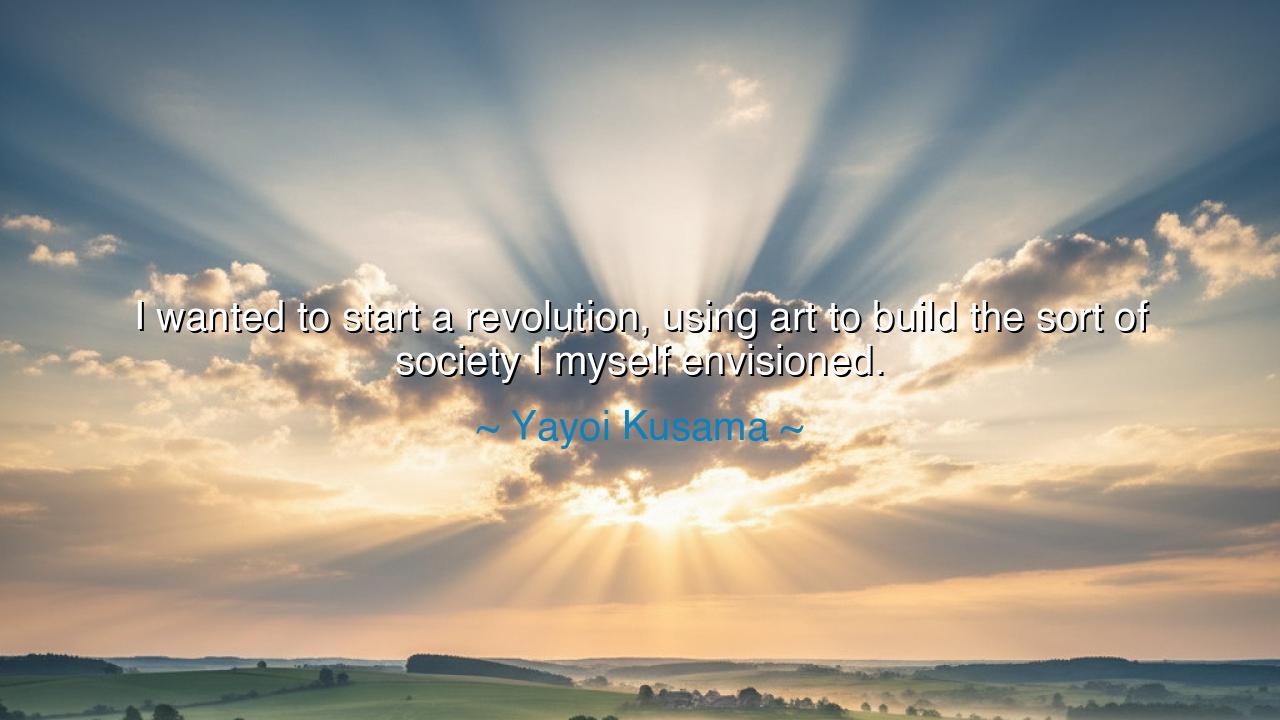
I wanted to start a revolution, using art to build the sort of
I wanted to start a revolution, using art to build the sort of society I myself envisioned.






Hear the words of Yayoi Kusama, the visionary artist who clothed infinity in dots and mirrored rooms of endless reflection: “I wanted to start a revolution, using art to build the sort of society I myself envisioned.” These words are not the boasting of one who sought fame, but the solemn cry of a soul who saw art not as decoration, but as weapon, shield, and torch. Kusama’s life, marked by struggle, exile, and inner battles, gave rise to a vision of creation as transformation: to overturn the boundaries of culture and reshape the very structure of how men and women relate to the world and to one another.
The meaning is profound. Most see art as a mirror, reflecting society as it is. But Kusama saw it as a hammer, with which to break the old world and forge a new one. Her revolution was not of bullets or banners, but of images, colors, and symbols that altered perception itself. For she understood that before society changes outwardly, it must be reimagined inwardly. To shift the soul of the people is the deepest act of rebellion; to awaken new ways of seeing is to prepare the ground for new ways of living.
The ancients too believed in the transformative power of art. In Athens, the tragedies of Sophocles and Euripides stirred reflection on justice, fate, and mercy. They were not mere entertainments, but public rituals that shaped the moral conscience of the city. In Rome, the poetry of Virgil did more than praise the empire—it carved a sense of destiny for its people. Thus, throughout history, art has stood as the hidden architect of society, crafting visions that rulers alone could never enforce. Kusama joins this eternal lineage, declaring openly what others only implied: that to create is to revolt.
Consider Kusama’s own journey. She fled the rigid traditions of Japan and arrived in New York in the 1950s, where she staged happenings and installations that challenged war, capitalism, and the very definition of art. Her polka dots and infinity nets were more than patterns; they were symbols of the self dissolving into the cosmos, of barriers breaking down between people, of unity in endless multiplicity. At a time when society was torn by violence and division, she used art as her battlefield, proclaiming that creativity itself could be a revolution against hatred.
The lesson of her words is clear: do not imagine that revolutions are only carried out by warriors and kings. A brush can be as mighty as a sword, a poem as dangerous as an army, a song as enduring as any law. Every act of art has the potential to seed a new vision of society. To dare to envision a world beyond what exists—to imagine it, to paint it, to sculpt it, to sing it—is already to begin building it. And those who dismiss this truth remain blind to the invisible revolutions that shape history.
For each of us, there lies a calling in Kusama’s declaration. Ask yourself: what is the society you envision? Is it one of justice, beauty, compassion, freedom? And how will you express it—not through destruction, but through creation? Whether in words or deeds, in song or craft, in kindness or in innovation, every act that expresses your vision plants a seed of the world to come. To live creatively is to live rebelliously, refusing to let the present order define the limits of what is possible.
Thus remember: Yayoi Kusama’s revolution was not of power but of perception, not of conquest but of imagination. She teaches us that the artist is not a servant of society, but its prophet, its challenger, its midwife. And if each of us dared to carve our vision into the world—not by force, but by art—then truly, as she said, society could be rebuilt into the shape of our highest dreams.






AAdministratorAdministrator
Welcome, honored guests. Please leave a comment, we will respond soon